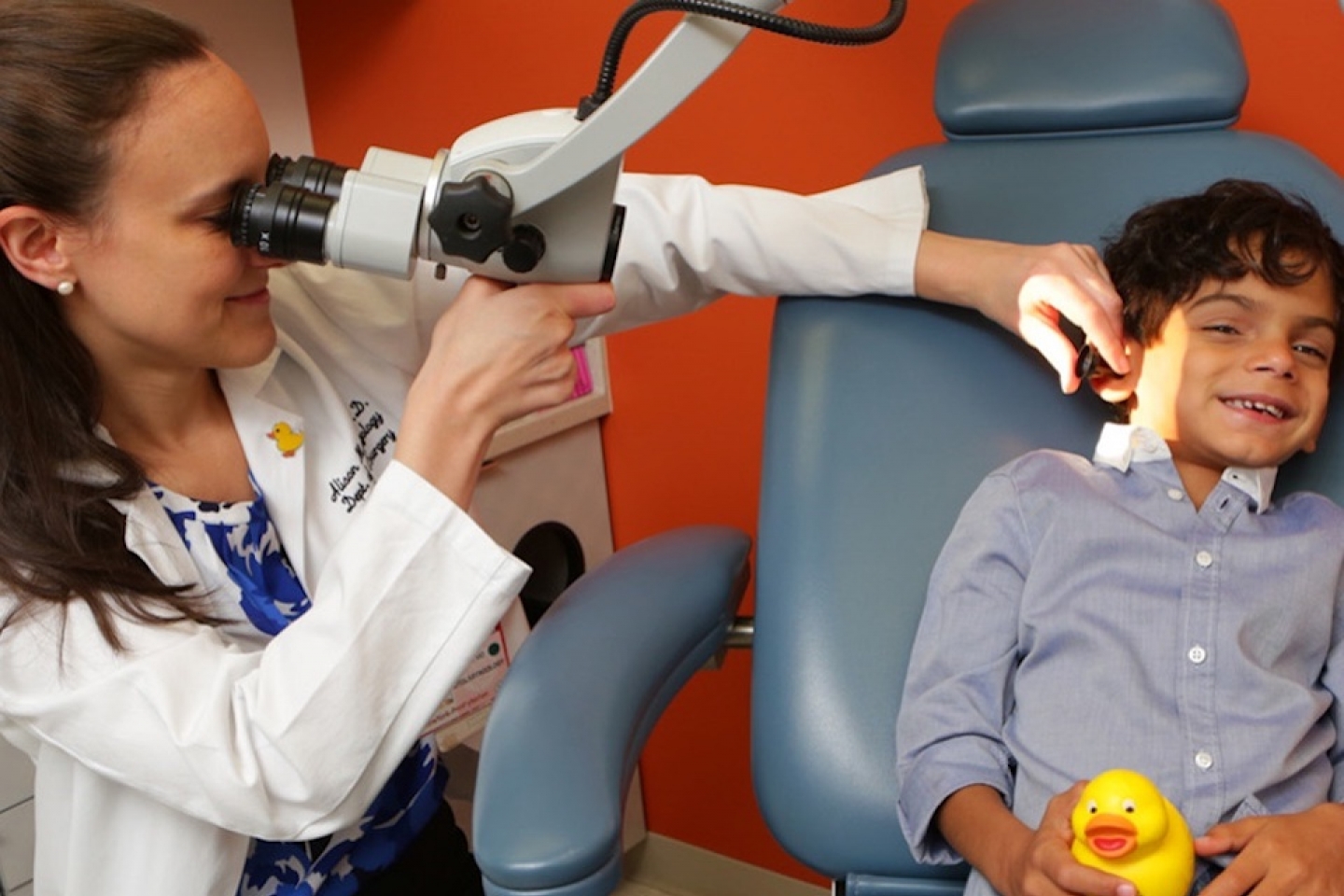
Timing matters in managing pediatric hearing loss. That’s why Alison M. Maresh, M.D. and the multidisciplinary pediatric otolaryngology team at the Department of Otolaryngology Head and Neck Surgery at Weill Cornell Medicine intervene as soon as hearing loss is diagnosed.
“Kids have this limited time where the brain is developing based on exposure to sounds,” explains Dr. Maresh, assistant attending otolaryngologist at Weill Cornell Medicine and NewYork-Presbyterian and assistant professor of otolaryngology at WCM. “Babies and children need to get sound exposure to stimulate neurons for speech and language for higher communication. What you miss, you never get back.”
Here Dr. Maresh answers questions about the causes of hearing loss, and the unique approach Weill Cornell Medicine (WCM) takes to manage it.
About one in about 2,000 babies in the United States suffer from hearing loss from birth. For those patients, we are often counseling whole families. We remind parents that congenital hearing loss is usually not associated with another medical problem, and their children will develop normally; being able to do what other children can do.
Our practice takes a comprehensive, team approach. We have audiologists who manage hearing aids and an educational specialist who works with families to make sure their child gets services in school that will take their hearing loss into account.
We also connect families with New York State’s early intervention program for children ages birth to three. It offers everything from speech pathology and audiology, to assistive technology devices and services. There also are a number of schools in New York that specialize in teaching children with hearing loss, which can be a healthy environment for some kids.
I see a lot of patients who have conductive hearing loss—when there’s physical a blockage that doesn’t allow sound. That’s often wax, and we can remove it and restore hearing on the spot.
In younger children—around ages one to four—we often see fluid behind the ear drum. This is a unique problem for kids because their middle ear hasn’t fully matured. This age group gets colds more often, so the regular fluid build-up can lead to hearing loss.
The good news is that it’s very easy to treat this. We perform a five-minute procedure under general anesthesia to insert tiny tubes into the ear, allowing the fluid to drain.
It’s rewarding when families tell us immediately after surgery that kids are pointing out sounds they’d never heard, and that their child’s language abilities have exploded. It’s satisfying that we can offer improvement in development and quality of life in such an immediate way.
Sometimes kids ask constantly for repetition, or they might be turning up the volume on electronic devices on a regular basis.
Schools can offer a unique perspective on a child’s behavior that might ultimately be attributed to hearing loss. Sometimes it can seem like children aren’t paying attention, listening or following directions, or are speaking too loudly, when the problem is that they’re struggling to hear. It’s helpful to be in touch with teachers or daycare centers to get their input.
There’s a fragile time in a child’s development when it’s important not to miss hearing loss. Once we establish that this is the problem, we can help connect families with resources their child needs as soon as possible. Hearing tests are the first thing we do when parents come to us with speech, language, and developmental concerns, and are an easy and fast way to give families peace of mind.
Subscribe to our mailing list to stay up to date on all the latest health news and important updates from Weill Cornell Medicine.